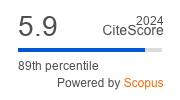Article | Open Access
Still ‘Watching’ TV? The Consumption of TV Fiction by Engaged Audiences
| Views: | 6853 | | | Downloads: | 4913 |
Abstract: There is no denying that television, as a medium and an institution, has drastically changed in the age of digitization and convergence. For audiences, this has not only opened up multiple opportunities to watch television content at other times and on other devices, but also to interact with its cross-media extensions. However, while much has been written about the new opportunities for audience engagement, we do not know much about the actual adoption of new technologies nor the motivations underlying such uses. Therefore, this paper draws on empirical audience research to address the key question: how do viewers engage with contemporary TV fiction? Through empirical audience research, using various qualitative research methods, three different aspects of the reception of cross-media TV fiction will be discussed: (1) how do viewers watch the TV episodes of contemporary TV fiction?, (2) how do viewers engage with the cross-media extensions of TV fiction?, and (3) how do viewers experience the social dimensions of contemporary TV fiction? We focus on a particular group, that of 'engaged' viewers, who are actively involved by personalizing their viewing practices, by communicating about it, by consuming cross-media elements of TV fiction, or producing TV fiction-related content. Our findings suggest that even this group does not make full use of all the available technological opportunities to personalize TV viewing, and that the classical TV text, linear viewing, and the social aspect of viewing remain of key importance.
Keywords: cross-media; Flanders; in-depth interviews; TV fiction; TV viewing
Published:
© Alexander Dhoest, Nele Simons. This is an open access article distributed under the terms of the Creative Commons Attribution 4.0 license (http://creativecommons.org/licenses/by/4.0), which permits any use, distribution, and reproduction of the work without further permission provided the original author(s) and source are credited.


